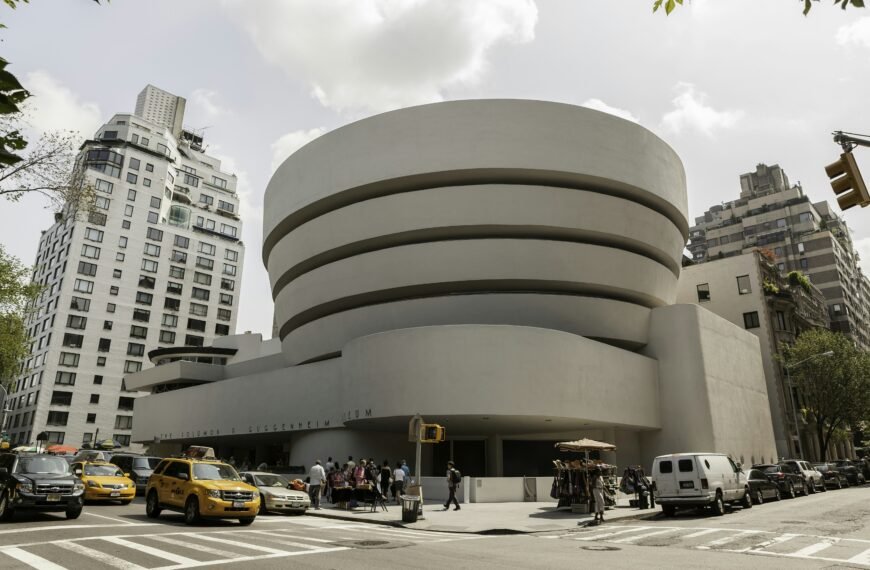In the article “Ray Francis: Documenting and Celebrating Blackness,” we are introduced to the work of Ray Francis, a photographer who dedicated his art to capturing and honoring members of the African diaspora. His photographs, with their deep shadows and bold contrasts, go beyond mere technical mastery and delve into issues of race and segregation. Currently on display at the Bruce Silverstein gallery in New York, this posthumous solo exhibition showcases thirty-two captivating prints that reflect Francis’s unique perspective on blackness and its significance.

Introduction
In the world of photography, there are certain photographers whose work stands out for its ability to capture the essence of a community and provoke thought on important social issues. One such photographer is Ray Francis. Known for his powerful and visually striking images, Francis dedicated his career to documenting and celebrating members of the African diaspora. Through his unique style and technique, he sought to shed light on the experiences and struggles of black communities, while also celebrating their strength and resilience. In this comprehensive article, we will explore the life, work, and influence of Ray Francis, and the impact he has had on contemporary photography and the promotion of black art.
About Ray Francis
Early Life and Background
Ray Francis, born in 1937, was a photographer who made a significant impact on the art world through his work that focused on black communities. He grew up in a vibrant and diverse neighborhood, which exposed him to different cultures and perspectives from a young age. This multicultural environment played a crucial role in shaping Francis’s artistic vision and his commitment to representing the experiences of black people in his photography.
Founding of the Kamoinge Workshop
In 1963, Francis played a key role in the founding of the Kamoinge Workshop in New York. The Workshop was a collective of black photographers who aimed to use photography as a means of empowerment and self-expression, while also challenging negative stereotypes and promoting positive representations of black people. Through the Kamoinge Workshop, Francis found a community of like-minded artists who shared his passion for social change and artistic exploration.
Style and Technique
One of the distinguishing features of Ray Francis’s photography is his ability to capture the beauty and complexity of black skin tones. He became known for his use of deep blacks and shadows in his images, which added a sense of depth and drama to his compositions. Francis’s use of contrast and lighting played a crucial role in creating visually striking images that drew the viewer’s attention and conveyed a powerful message. His mastery of light and shadows allowed him to highlight the unique features and expressions of his subjects, capturing their individuality and humanity.

Documenting Black Communities
The Mission of the Kamoinge Workshop
At the heart of Ray Francis’s work was a commitment to depicting the experiences and stories of black communities. Through the Kamoinge Workshop, Francis and his fellow photographers sought to challenge stereotypes and promote a more nuanced and accurate representation of black people in photography. They believed that by showcasing the diversity and beauty of black culture, they could help break down barriers and foster a greater understanding and appreciation of black people and their contributions to society.
Depicting Black People in Photography
In a time when mainstream media often perpetuated negative stereotypes of black people, Ray Francis’s photography offered a counter-narrative. His images captured the strength, resilience, and joy of black individuals and communities, challenging preconceived notions and providing a more authentic representation. By showing black people in moments of everyday life, Francis humanized his subjects and emphasized their individuality and humanity, pushing back against dehumanizing tropes often associated with black people in the media.
Reflections on Race
Ray Francis’s work often reflected his own experiences and observations regarding race in America. As a black photographer navigating a predominantly white art world, Francis was acutely aware of the racial disparities and systemic issues that plagued society. Through his photography, he sought to shed light on these issues and spark conversations about race, segregation, and inequality. His images served as a visual commentary on the state of black America, inviting viewers to reflect on their own beliefs, biases, and responsibility in creating a more inclusive and equitable society.
The Power of Blackness
The Importance of Shadows and Deep Blacks
In the world of photography, light and shadows play a crucial role in creating depth, contrast, and visual impact. Ray Francis understood the power of shadows and deep blacks in conveying emotional depth and richness in his images. By manipulating light and shadow, he was able to create striking compositions that drew the viewer’s attention and conveyed a sense of drama and intensity. In Francis’s work, the use of shadows and deep blacks also served as a metaphorical representation of the experiences and struggles of black people, highlighting their resilience in the face of adversity.
Exploring the African Diaspora
Throughout his career, Ray Francis sought to explore and celebrate the African diaspora. His photography captured the diversity and richness of black culture, from African traditions to the experiences of black communities in America and beyond. Through his images, Francis aimed to forge connections and bridge gaps between different parts of the African diaspora, emphasizing the shared experiences, history, and resilience of black people across the globe.
Addressing Issues of Race and Segregation
One of the central themes in Ray Francis’s work was the exploration of race and segregation. Through his striking imagery, he challenged the viewer to confront the realities of racial discrimination and the impact it had on black communities. His photographs served as a visual critique of the systemic inequalities and structural barriers that perpetuated segregation and oppression. By shining a light on these issues, Francis aimed to stimulate dialogue and inspire change, contributing to a more inclusive and equitable society.

Ray Francis: A Solo Exhibition
Overview of the Exhibition
In recent years, there has been a growing recognition of Ray Francis’s contributions to the field of photography. In a posthumous solo exhibition at the Bruce Silverstein Gallery, Francis’s work is being showcased and celebrated. The exhibition provides a comprehensive overview of his career, highlighting the key themes and techniques that made his photography so impactful. From his early works to his later explorations of the African diaspora, the exhibition offers viewers a glimpse into the world and vision of Ray Francis.
Highlights from Francis’s Work
Within the exhibition, there are several standout images that exemplify Ray Francis’s unique style and ability to capture the spirit of his subjects. One particularly notable photograph is “Genie,” taken in 1971. In this image, Francis showcases his mastery of light and shadow, using them to carve out the contours of the subject’s face and create a sense of mystery and intrigue. The photograph exemplifies the power of Francis’s photography to capture a moment and evoke emotion in the viewer.
Posthumous Recognition
Although Ray Francis’s contributions to photography were significant, his work did not receive widespread recognition during his lifetime. It is only in recent years that his photographs have gained greater attention and appreciation. The posthumous exhibition at the Bruce Silverstein Gallery is part of a movement to recognize Francis’s artistic legacy and the impact he had on the field of photography. Through exhibitions and retrospectives, his work is being rediscovered and celebrated, contributing to a broader understanding of the African diaspora and the power of black art.
Influence and Legacy
Impact on Contemporary Photographers
The work of Ray Francis continues to inspire and influence a new generation of photographers. His unique style, use of light and shadow, and commitment to representing black communities have left an indelible mark on the field of photography. Many contemporary photographers now draw inspiration from Francis’s work and strive to carry on his legacy of using photography as a tool for social change and empowerment. Through their own artistry, they work to challenge stereotypes, promote representation, and foster a greater understanding and appreciation of black people and their experiences.
Preserving and Promoting Black Art
In addition to his impact on individual photographers, Ray Francis’s work has also helped raise awareness and appreciation for black art as a whole. By celebrating the beauty and strength of black culture, Francis highlighted the importance of promoting and preserving black art in all its forms. His images served as a reminder of the rich artistic contributions made by black artists throughout history, and helped create a greater demand for black art in both galleries and museums. Today, there are numerous initiatives and organizations dedicated to showcasing and promoting black art, thanks in part to the groundwork laid by Francis and his contemporaries.
Continuing the Work of the Kamoinge Workshop
Although the Kamoinge Workshop disbanded in 1973, its legacy continues to inspire and drive conversations around representation and social change. Many artists and photographers today credit the Workshop and its founding members, including Ray Francis, for paving the way for greater diversity and inclusion in the art world. Additionally, there are currently efforts underway to revive and reestablish the Kamoinge Workshop, carrying on its mission of using photography to document and celebrate black communities. The work of Ray Francis and the Kamoinge Workshop serves as a testament to the power of collective action and the ability of art to effect change.
Critical Reception
Review of Francis’s Work
The work of Ray Francis has received critical acclaim for its power, emotional depth, and technical mastery. Critics have praised his ability to capture the nuances of black skin tones and the resilience of black communities. Francis’s use of light and shadow, as well as his skillful composition, have been recognized as key elements in creating photographs that resonate with viewers on both an aesthetic and emotional level. By capturing the essence of his subjects and the spirit of the African diaspora, Francis’s work transcends mere documentation and becomes a powerful statement on race, identity, and belonging.
Artistic Significance
Beyond the technical aspects of his photography, Ray Francis’s work holds significant artistic and cultural significance. His images challenge traditional notions of beauty and representation, inviting viewers to question their own biases and preconceptions. Francis’s exploration of the African diaspora and his commitment to highlighting the diversity within black communities have contributed to a broader understanding and appreciation of black culture and heritage. His photographs serve as a visual testament to the strength, resilience, and beauty of black people, and have helped reshape the narrative around black art and representation in the art world.
Cultural and Historical Context
Ray Francis’s work cannot be separated from its cultural and historical context. Born and raised during a time of deep racial inequality and segregation in America, Francis’s photography served as a form of resistance and a means of reclaiming black narratives. By capturing the everyday lives and experiences of black people, he sought to challenge the prevailing stereotypes and dehumanizing imagery often associated with black communities. His work provides a window into the social and political climate of the time, and serves as a reminder of the ongoing struggle for racial equality and justice.
Celebrating Blackness
Honoring the African Diaspora
One of the central themes in Ray Francis’s photography is the celebration and honoring of the African diaspora. Through his images, Francis sought to showcase the diversity, resilience, and beauty of black people from around the world. By highlighting the shared experiences and history of the African diaspora, he aimed to foster a greater sense of unity and empower individuals within these communities. The celebration of blackness in Francis’s photography serves as a powerful statement of pride and affirmation of black identity.
Exploring Diversity and Identity
In addition to celebrating blackness as a whole, Ray Francis’s work also explores the diversity and nuances of black identity. Through his images, he captures the individuality and complexity of his subjects, challenging the notion of a monolithic black experience. Francis’s photographs showcase the multicultural and multifaceted nature of black communities, highlighting the rich tapestry of traditions, cultures, and identities within the African diaspora. By embracing and championing diversity, his work contributes to a more inclusive and nuanced understanding of black identity.
Promoting Representation
Representation is a recurring theme in Ray Francis’s photography. Through his images, he sought to provide positive and authentic representations of black people, countering the negative stereotypes often perpetuated by the media and popular culture. Francis’s work highlights the beauty, strength, and humanity of his subjects, giving voice to those who have been marginalized and underrepresented. By promoting representation, Francis aimed to challenge dominant narratives and create a more inclusive and accurate depiction of black life and culture.
The Importance of Documentation
Preserving Black History and Culture
Ray Francis’s photography has played a crucial role in preserving black history and culture. Through his images, he documents the experiences, traditions, and stories of black communities, ensuring that they are not forgotten or erased. Francis’s photographs provide a visual representation of the struggles and successes of black people, preserving their stories for future generations. By documenting black history and culture, Francis contributes to a broader understanding of the African diaspora and its place within the fabric of society.
Amplifying Marginalized Voices
One of the primary aims of Ray Francis’s work was to amplify the voices of those who had been historically marginalized and silenced. By centering black people and their experiences in his photography, Francis provided a platform for these individuals to be seen and heard. His images provide a powerful counter-narrative to the dominant, often stereotypical portrayals of black people in mainstream media. Through his photography, Francis sought to challenge the status quo and give agency and visibility to those who had been rendered invisible.
Building a More Inclusive Narrative
By documenting and celebrating black communities, Ray Francis’s work contributes to the creation of a more inclusive and accurate narrative of history and culture. His images challenge the notion of a singular, white-centric perspective and provide a more holistic and nuanced understanding of the world. Francis’s photography helps to bridge gaps, foster empathy, and promote a greater appreciation for the diverse experiences and contributions of black people. Through his documentation, he helps reshape the narrative and create space for previously marginalized voices to be heard.
Conclusion
Ray Francis was a visionary photographer who used his art to celebrate and document black communities. Through his unique style and technique, he captured the beauty, complexity, and resilience of black people, challenging stereotypes and promoting representation. His work continues to influence and inspire a new generation of photographers, and his contributions to the field of photography have been recognized posthumously. Ray Francis’s legacy extends far beyond his individual photographs, as his commitment to promoting black art and social change lives on through the work of contemporary photographers and the ongoing efforts to preserve and recognize the contributions of black artists. Francis’s photography serves as a testament to the power of art in shaping culture, challenging perceptions, and advocating for a more inclusive and equitable society.







